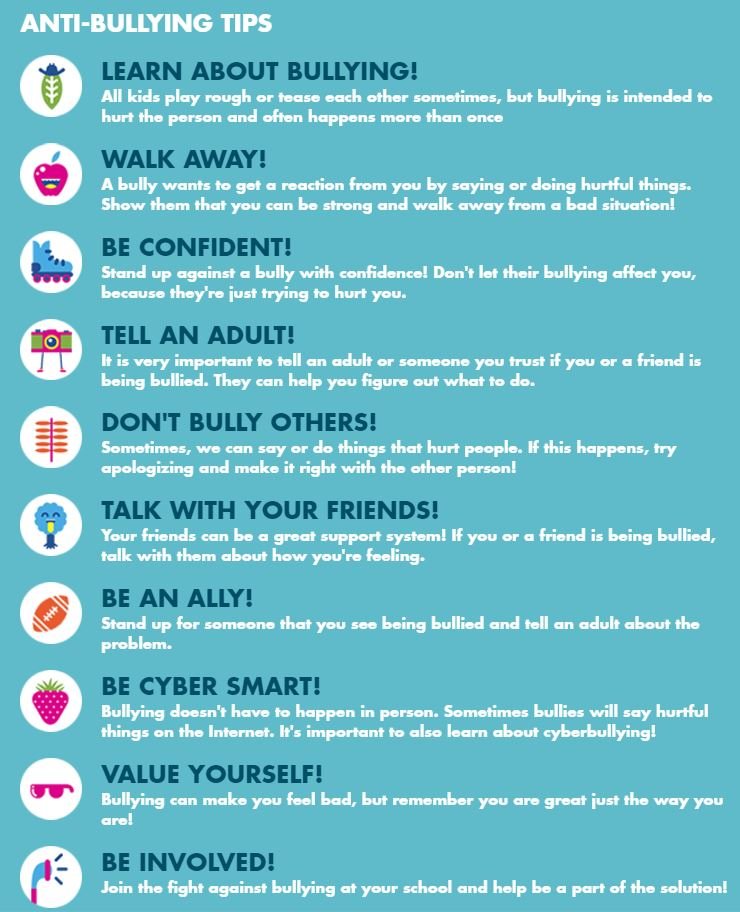What is Bullying?
“Bullying is an ongoing misuse of power in relationships through repeated verbal, physical and/or social behavior that causes physical and/or psychological harm. It can involve an individual or a group misusing their power over one or more persons.”
But bullying isn’t always punches and name-calling. Today, bullying can take many forms and happen across a variety of platforms.
As an individual, it is important to know the signs, the precursors, and the right steps to take to help mitigate or prevent it.
What are the Different Types of Bullying?
Pushing and shoving isn’t the end-all, be-all type of bullying that people of all ages participate in. In fact, there are six main categories of bullying that define different techniques and methods used to intimidate someone. Let’s take a look at bullying behaviors;
1. Physical Bullying: This occurs when people use their physical force and actions to take control of someone else. Though it isn’t always the case, physical bullies are often bigger, stronger, and more fit than their peers. Knowing this, they use their strength and power to their advantage, using their body to weaken their target. Kicking. Punching, Hitting, Shoving, Slapping, and Slamming are some forms of physical bullying.
2. Verbal Bullying: From children who get picked on at recess to spouses who are repeatedly lashed out at by their partners, verbal bullying can take many forms. Verbal bullies use words, language, and painful statements to bring a similar level of shame.
3. Cyberbullying: Cyberbullying occurs when someone uses the internet to share hurtful comments, slander, embarrass, threaten, harass or otherwise harm someone else. A few examples include posting hurtful comments, sharing hurtful or embarrassing images, making threats online, and sending hurtful emails or text messages.
:max_bytes(150000):strip_icc()/reasons-why-kids-are-bullied-460777-37332ee071814a97982f5ee86051ce55.png)
4. Emotional Bullying: Also called relational aggression. Emotional bullying occurs when students try to ostracise one of their peers by changing their social standing, putting themselves in a more powerful and popular position in the process. Ways that an emotional bully might achieve his or her aim include: Spreading lies about the target, sharing secrets told in confidence, exposing embarrassing aspects of the target’s life, manipulating social situations, breaking trust
5. Prejudicial Bullying: Any time that someone is bullied because of his or her race, religion, or sexual orientation, this is prejudicial bullying or racism bullying. It’s called this because the root of the attack is the bully’s preconceived prejudices against the other person or persons. Anyone who targets someone who looks or acts differently than they do is a prejudicial bully.
6. Sexual Bullying: There are many different forms that sexual bullying could take. In addition to physically harming someone in a sexual manner, it can also include any verbal or emotional attacks that seek to humiliate or shame them sexually. From name-calling and crude remarks to obscene gestures and uninvited exposure or touching, there are myriad actions categorized under this umbrella. When such comments about a target’s appearance or sexual development turn physical, the issue turns from sexual bullying into sexual assault.
How can you fight against being bullied?
Being bullied is a frustrating and painful experience. When you are being bullied, it can often feel like things are out of your hands. While the onus is never on you to stop the bullying, and it’s never your fault, there are some things you can do to handle being bullied.
- Don’t engage: Verbal bullies hope that you engage with them so that they have an excuse to keep picking on you. If the bully isn’t disrupting your personal or work life, don’t engage with them. When the bully starts verbally attacking you, remove yourself from the situation if you can. If it’s safe for you to do so, simply walk away.
- Have a conversation with the bully: Many people who bully have many unresolved issues that cause them to act out. While this doesn’t excuse their behavior, having a conversation with the bully might help them realize just how much their actions are hurting you and hopefully deter them from continuing.

- Report it: If the bully refuses to let up after having a conversation with them, you should take the issue to a higher authority. If it’s happening at work, you should take it to your boss, or if it’s happening at school, you can report it to a teacher. If you feel at risk of physical harm from the bully, you should consider involving the police.
- Recite positive affirmations: Try as you might to ignore the bully when they are saying ugly things about you; some of these things might stick in your mind. It’s important to remember that, in many cases, bullies are only projecting their insecurities onto you and none of what they are saying about you is accurate. Remind yourself that you are a great person and that nothing your bully says matters.
- Protect your personal space: If a family member is bullying you in your home, draw firmer boundaries and protect your personal space. This might involve telling a family member living with you to move out or moving out yourself if you can afford to.
- Get help: Getting help to deal with a bully, especially as an adult, might seem embarrassing, but don’t hesitate to get help when you feel like you need it. Tell a friend or loved one that you are being bullied.
Things You Shouldn’t Do When You are Being Bullied
- Don’t blame yourself: Bullying is never your fault. It’s only the bully’s fault, so don’t blame yourself for their shortcomings.
- Don’t take out your frustrations on other people: If you are being bullied by someone in a position of power over you, it can be easy to let the feelings of frustration out on a subordinate. Resist the urge to do this because this would make you a bully too.
- Don’t disrupt your life: Don’t disrupt your day-to-day life because of a bully. It can be tempting to skip work, school, or a family function because you’ll be confronted by the bully. Don’t let them disrupt your life. The exception to this is if it’s unsafe for you to be in close proximity to the person who is bullying you.
- Don’t retaliate: While it might seem tempting to pay back the bully’s action’s in kind, you shouldn’t retaliate if you are being bullied. Many bullies hope to elicit an adverse reaction from you when they bully you. Denying them this satisfaction can take away some of their power.
- Dealing With Being Cyberbullied: The first thing you should know is that you shouldn’t engage with them. You can also block their accounts from viewing and interacting with yours.
How to Help Someone Who Is Being Bullied
- Speak up on their behalf: It can be difficult for a bullied person to report the situation to a person in authority. You can do so on their behalf if you find that they’ve been avoiding it.
- Talk to the bully: If it feels safe for you to do so, you should speak to the bully and attempt to deter them from their actions.
- Help build their confidence: Being bullied can take a toll on one’s sense of self-worth and confidence. Help restore it by reminding them that they are not who the bully says they are.
- Create a support system: Feeling like they have a robust support system is vital for anyone being bullied. In combination with being bullied, feelings of isolation can lead to anxiety and depression.
There’s no one way to deal with bullies. Different tactics apply in different scenarios. Bullying is a horrible thing to deal with, and no one deserves to be bullied. While you can try to work out issues with the bully yourself, report to a higher authority if you feel threatened or overwhelmed. If you find that you are having a difficult time dealing with the emotional aftermath of being bullied, please don’t hesitate to reach out to a mental health professional.
